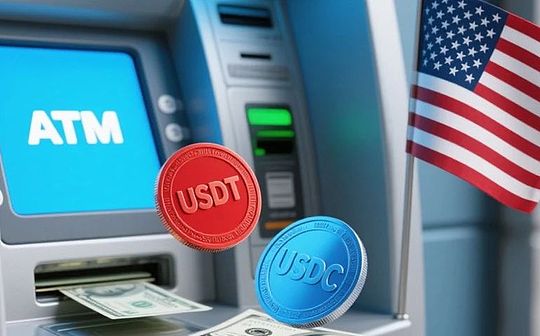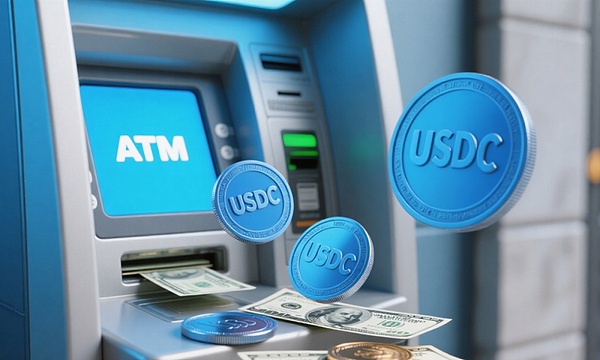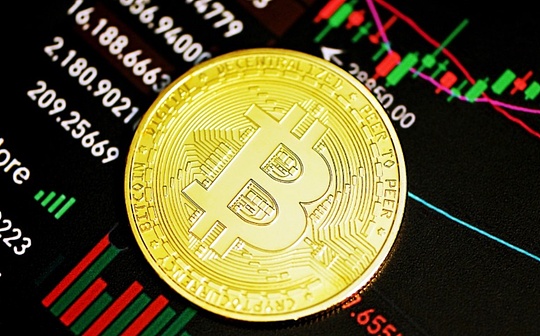
In August 2025, the United States Banking Federation (many heavyweight institutions, BPI, the Institute of Banking Policy Institute, also included) submitted an emergency letter to Congress.The letter warns that there are potential “regulatory loopholes” in the GENIUS bill that could send up to $6.6 trillion of bank deposits into the stablecoin market, which is close to nearly one-third of U.S. GDP.This warning reveals and highlights the tension between the traditional financial system and emerging digital assets, as well as the potential impact of stablecoins as new financial instruments on the existing financial order.The concerns of the banking alliance are based on evidence. Stable coins such as USDT and USDC are widely used in mainstream exchanges such as Coinbase and Kraken. These platforms use various “revenue plans” to attract users, causing the deposit foundation of traditional banks to be threatened unprecedentedly.
GENIUS Act Loopout: “Gray Zone” of Stablecoin Income
On July 18, 2025, “King of Understanding” Chuanbao signed the “Guiding and Establishing the National Innovation Act of the United States Stable Coin” (GENIUSAct), which builds a federal regulatory framework for payment of stablecoins. It requires issuers to maintain reserves at 1:1 and ban algorithmic stablecoins, and also makes it clear that stablecoins are not securities or commodities.However, there is a key loophole in the bill. Although it clearly does not allow stablecoin issuers to directly pay interest or income to holders, it does not extend the ban to crypto exchanges or affiliated companies, thus opening a “backdoor” for stablecoins to obtain income through third-party channels.
JDSupra analyzed that “payment stablecoins” are defined by the GENIUS Act as digital assets for payment or settlement. The issuer must be a subsidiary of the depositary institution, a federally qualified non-bank entity or a state qualified issuer and must publish an audited reserve report every month.The GENIUS Act is very vague on the core issue of “revenue provision”, thus leaving a loophole for regulatory arbitrage. The Bank Policy Institute mentioned that although Circle’s USDC does not provide profits themselves, it is in cooperative exchanges such as Coinbase.Users who hold USDC can receive an annualized reward of 2-5%.This is actually the issuer’s indirect profits through the related parties, thus completely avoiding the restrictions of the GENIUS Act.

Current market situation: The “ice and fire” of stablecoins
The banking industry has issued a harsh warning that the actual scale of the stable currency market is still insignificant compared with the US $22.118 trillion M2 money supply.This data comparison has made the “threat urgency” controversial, and supporters feel that the current risks are completely controllable and the banking industry is overreacting.Opponents stressed that the growth potential and network effects of stablecoins will trigger systemic risks like “boiling frogs in warm water”.
In actual applications, stablecoins in the payment field have already occupied an important position. NOWPayments data shows that in the first half of 2025, stablecoins account for 57.08% of merchant crypto payments, and USDT and USDC combined account for more than 95%.Stable coins have the advantages of low-cost and fast arrival in cross-border payments, e-commerce settlements, and emerging market remittances. They are gradually replacing traditional bank transfers and remittance services.For example, the volume of stablecoin transactions in Kenya, Africa, increased by 43% in 2025, mainly used for cross-border trade and salary payments reflect the unique value of stablecoins in meeting actual financial needs.
$6.6 trillion in transfer risk:The “doomsday scene” of the banking industry

The Bank Policy Institute (BPI) warned in a letter to Congress, citing data from the U.S. Treasury report in an April letter that the loophole could trigger a $6.6 trillion outflow of bank deposits (this figure is equivalent to one-third of the total amount of all commercial banks in the United States).Once the bank’s credit creation ability will be severely weakened and the loan interest rates will be pushed up, the financing costs of ordinary households and businesses will eventually be damaged.BPI emphasizes that banks rely on deposits to issue loans, and the high returns of stablecoins may allow depositors to transfer funds from traditional bank accounts to crypto exchanges. The risk of such “deposit moving” is more significant when the economy is unstable.
Faced with the current concerns about the stablecoin market, this concern is not groundless. As of CoinStats data on August 20, 2025, its total market value is only US$288.7 billion, but its growth rate is astonishing. The US Treasury Department expects that the stablecoin market size may reach US$2 trillion in 2028.If related parties are allowed to provide revenue growth, it may further accelerate, with the top two stablecoins in the market, Tether and USDC, accounting for more than 80%.Among them, USDT has a market value of US$167.1 billion and USDC reaches US$68.3 billion. Their “revenue plans” on platforms such as Coinbase and Kraken have become an important means to attract users.Coinbase gives USDC holders an annualized reward of 3.5%, while bank current account interest rates are only 0.5%, which is very attractive to depositors.
Regulatory Game: The “balance beam” of innovation and stability
In this financial regulatory game, all parties have a clear position. The banking alliance insists on a complete ban on any form of income from stablecoins, believing that this is a necessary measure to protect the stability of the financial system.The crypto industry advocates “precision supervision” and only prohibits abuse and does not hinder innovation.On August 19, the U.S. Treasury Department stated that it is soliciting public opinions on the implementation of the GENIUS Act, and paying particular attention to the use of technologies such as digital identity verification and blockchain monitoring in preventing illegal financial activities.
Some experts have proposed compromise plans, such as requiring stablecoin issuers to bear joint and several liability for related parties’ earnings activities or set income caps to prevent excessive competition.In a speech in February 2025, Federal Reserve Director Christopher Waller said that stablecoins are not “mortal rivals” and regulatory arbitrage is the one.What we need is a regulatory framework that can protect consumers and financial stability and promote innovation, and many industry insiders agree with this view.They think the GENIUS Act was a good intention, but it should use technical means and more detailed rules to plug loopholes, and all profit activities cannot be simply banned.

The GENIUS Act will be implemented in 2027 or earlier, and there will be little time for regulators and market participants.If the banking alliance’s demands are met, the related parties are prohibited from providing stablecoin returns.Although the risk of deposit outflow may be temporarily curbed, the innovative potential of stablecoins may also be stifled, and the market will be pushed to an unregulated offshore platform.If the status quo is maintained, traditional banking business may be eroded faster by stablecoins, but this may also prompt banks to accelerate digital transformation and launch more competitive products.
The financial choices of ordinary users will be directly affected by the results of this regulatory game. The answers to these questions will gradually have results in the next few years whether the high returns of stablecoins can continue, whether traditional banks will raise deposit interest rates to compete, and whether regulatory arbitrage space will be completely blocked.In any case, stablecoins are the bridge connecting traditional finance and crypto economy, and their development trajectory cannot be changed. Finding a balance between innovation and stability will be a long-term challenge for regulators, practitioners and users.
Conclusion: The “new frontier” of finance in the digital age
The U.S. Banking Alliance has taken action to close the loopholes in the GENIUS Act, which is essentially a “self-defense counterattack” carried out by the traditional financial system in the face of the digital wave.Although the risk of deposit outflow of US$6.6 trillion may be exaggerated, behind this is the inevitability of changes in the financial industry.Stablecoins are not only a new payment tool, but also a catalyst for upgrading financial infrastructure. Traditional banks are forced to rethink their business models, and regulators are also prompted to update their outdated rules.
In the “new frontier” of digital finance, there are no absolute winners or losers, only adapters and eliminated ones.Each of us must understand the nature of this change and master the knowledge of emerging financial instruments such as stablecoins, which will be an important ability to make financial decisions in the future.And no matter what the GENIUS Act is finally revised, the integration of digital assets and traditional finance is an inevitable trend, and those who can control this trend will be able to occupy a favorable position in the future financial landscape.







